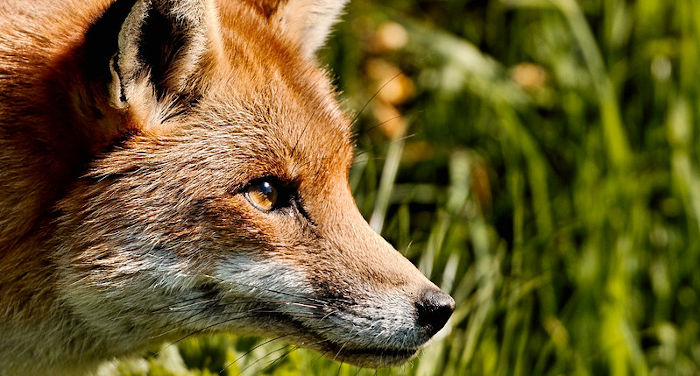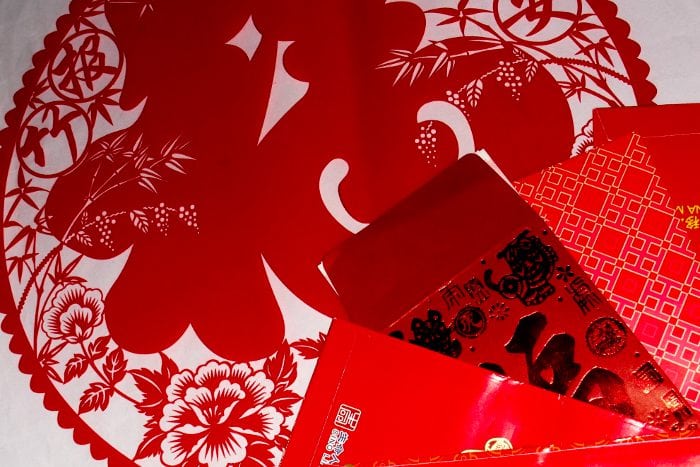
Chinese culture is rich and boasts a very ancient history. A first step in getting to know this world better is to get into the narrative and discover the literary works.
The theme of this article deals with the figure of fox spirits, of which you can also find a trace of in our time but traces its origins in a far off past.
This fantasy figure is developed in both Chinese and Japanese works, but today we’ll consider the subject just from the Chinese point of view.
Through the discovery of fox spirits one can obtain interesting information on the relationship between men and women, and humans and animals.
What is a fox spirit
Foxes (狐, hú) are usually animals with magical powers that can transform themselves by assuming various forms.
At least in the earliest known works, the fox is presented not only as an astute figure, as is also common in the West, but also a harbinger of ruin and misfortune, feared by men (Krappe Alexander 1944, “Far Eastern Fox Lore”, California Folklore Quarterly, Vol. 3, No. 2, Apr., pp. 124-147).
Through the description of the nine-tailed fox, you can better understand who the foxes are.
The tails of this fantasy creature grow on the basis of a ritual that the fox must prepare to do: every hundred years it must eat ten human hearts to be able to get another tail.
Only after growing nine tails on its body can it take on human form (conference of Guida Donatella, Interdisciplinary Seminary: il mostruoso, l’osceno, il terrifico nella dimensione del sacro, Università degli Studi di Napoli L’Orientale, 20/04/2011).
The category that covers the majority of transformations is when the foxes are shown in feminine form, involved in emotional and erotic experiences with men: they are always vicious beautiful women, comparable to the western femme fatale, on the prowl for men that fall in love with their apparent perfection.
The reason why foxes get together in a carnal way with people of the opposite sex is to capture the vital energy of their partner, in order to grow their own power and reach a higher level of life.
It is thanks to the transfer of the vital spirit in their bodies that this can happen. In particular during the Ming period (1368-1644), stories about fox spirits began to take on these connotations of seductions and vampirism (Guida, 2011).
Accounts of these creatures often end with the physical weakening of the lover that the spirit has chosen, or worse still, their death.
The reason behind the seeking of a companion of the opposite sex is tied to an ancient tradition: Foxes are creatures of darkness,and belong to the yin principle (阴, yīn), and must therefore join with a creature of the opposite principle, yang (阳, yáng), to gain strength.
Relationship between fox spirits and the figure of a woman
The figure of a wolf is tied to the way ancient Chinese tradition represented man and woman.
Man is said to have a limited quantity of vital energy, while women are divided into two categories that are clearly distinct: one on side there are the mothers and wives that are the source of virtue, while on the other there are the wicked immoral temptresses.
Fox spirits were at least in the beginning, part of this second category: taking the vital energy of men to strengthen themselves reflected the anguish of men over the loss of their virility (Idema Wilt, Haft Lloyd (2000), Chinese literature, Venice, Cafoscarina Editorial Library).
Types and exceptions
If the foxes are usually wicked women, there are a few interesting exceptions.
Feminine and masculine spirits
Contrary to the most popular thought regarding fox spirits, its not true that only the female sex is represented in the literary works.
The principle of yin is effectively tied to the female sphere, but the term feminine doesn’t necessarily refer just to what is female.
Male foxes serve various roles in the stories. They’re often a seductive man that pursues young girls, and are of the sort that usually expects death at the hand of someone who has friendly or intimate relations with the seductive person.
The male wolf can not only seduce a young girl, but also people of the same sex, giving life to stories centered on homosexuality.
Nevertheless the relationships these foxes can have with other humans aren’t necessarily physical. In some cases they just have friendships with other men.
In these stories the fantasy creatures seek to help their neighbor. Usually this is through financial gifts, foretelling the future, or thanks to the drugs they have in their possession.
Female fox spirits have very similar roles to those of the males. In fact there are lots of stories of both male and female foxes that help humans both economically or health-wise and in other phases of social life.
The fact that seductive young men come on the scene in the role usually reserved for women is perhaps an indication of a deliberate re-positioning of the social role of men compared to that of women.
Good and bad spirits
A revisiting already begun in the Tang epoch made sure that the stories of these animals were subdivided into very distinct categories: in some accounts they are still portrayed as selfish and bad foxes, while in others they are unselfish and good in their dealings with human beings for whom they have affection.
Revenge is also a recurring theme associated with foxes, which puts the bad actions manifested by the animal in relation to a wrong suffered, and therefore puts into context to a greater degree where men are shown to be capable of greater badness than the foxes.
There is therefore a sort of justification of the badness of these animals, derived from that of humans: foxes and men share the same nature.
The appearance of the figure in literary works
What we know about fox spirits has been passed down through the centuries through literary works.
A brief chronology
The first time a fox is mentioned in a work of Chinese literature is during the Zhou Dynasty, in 1100 B.C. in one of the odes of Shijing (the poetry classic), where the fox is portrayed as an omen of misfortune.
The mainstay for the discussion of fantastical creatures is “The book of the mountains and the seas”, which dates back to around the IV century B.C., and in which the fox newly makes his appearance in different aspects, among which is the nine-tailed fox.
Around 100 A.D. they are present in the repertoire dictionary “Shuowen Jiezi”, by Xu Shen. Here they are represented as creatures that are ridden by ghosts and are attributed as having pharmaceutical properties.
Finally, it is in the “Soushen Ji” of the IV century, where we have witnesses of foxes that make use of the bodies of cadavers or skulls to transform into men and women.
In particular during the Ming period (from 1368 to 1644), the stories about fox spirits begin to portray women motivated by physical desires acting to strengthen themselves.
By the early period of the Tang epoch they sought the approval of spirits by offerings of food and drink. But it is especially in the XI century that the fox acquired even more prestige and became worthy of its own worship: considered a divine animal, in the Song epoch (960-1279) there is evidence of honorary temples erected in honor of the king of the foxes (Guida, 2011).
Fox stories
To get right to the heart of the argument, you need to know the stories about these foxes. In the following selections, there are three brief summaries of stories that deal first with a good woman spirit, the second with a bad woman spirit, while the third is the spirit of a good man.
The story of Miss Ren of Shen Jiji
The story of Miss Ren (任氏傳, Rènshì Zhuàn) (care of Masi Edoarda – 1994, Chuanqi – Storie fantastiche Tang, Parma, Luni Editore) is a chuanqi, or account in classic language tied to supernatural or miraculous doings during the Tang epoch the recounts the story of Ren, a generous and faithful fox.
One day a certain Zheng meets a woman, Ren, whose incomparable beauty charms him, and overcoming his shyness, decides to accompany the woman home to have intimate relations with her.
After leaving the building, he asks a baker who it is that lives in there, but is told that nobody does – it’s just a ruined building and if he knew of someone living there, then he must have met the fox that bewitches men, inviting them to a luxurious palace that really doesn’t exist.
Zheng, crazy in love, doesn’t care if his companion is a fox, so he decides to look for and share his life with her.
Even the man’s brother in law, a certain Yin, isn’t able to remain indifferent to the woman’s beauty, so he tries to posses her by force until she is able to reason with him, inducing him to change his mind.
The fox-woman weaves excellent relations with both men: helps Zheng to come out of the misery he found himself in, and helps Yin to find a woman that’s food for him.
The turning point of the story is when the two convince Ren to leave, despite a prediction she made that traveling toward the west during the year would be her ruinL.
During the trip a group of dogs on a hunt crash into the horse the young woman is riding, causing her to fall. This turns her back to her actual form, leaving her to be mauled by the dogs.
The author’s intention seems to be to portray the sphere in which man and nature, the animal world and supernatural mix together.
There’s a very interesting homophone between the character 任 (rèn), the protagonist’s name, and the character 人 (rén), which means person. The author, through this association, seems to suggest a link between human beings and the protagonist. The fact that she’s called Ren, in fact, could mean that each man could be like the woman who’s the protagonist of the account.
The fox shows herself to be good not just by always staying true to the man that she loves, but also in administrating the affairs of the home. And she’s the one, in fact, who takes care of the domestic economics, helping the man to make some earnings, and it’s still here to help Yin look for a woman, to repay the (unrequited) love that he shows to her.
Note written in the Yuewei study – Matter or spirit? – of Ji Yun
“Note written in the Yuewei study” (阅微草堂笔记, Yuèwēi Cǎotáng Bǐjì) is a text from the XVIII century written by Ji Yun, whose stories are narrated simply to demonstrate the real existence of ghosts, foxes and supernatural phenomenon.
In the account “Matter or spirit?” (Ji Xiaolan – 1992, Note written in the Yuewei study, Turin, Bollati Boringhieri Editor) it tells of the story of a weak and sick young woman found dead after a fire in a store. Along with her body, one of a fox is also found.
The weakened physical condition of the young woman is immediately associated with romantic encounters with a fairy, and the inhabitants of the village make a few guesses regarding the death of the two.
But the reality is different than all the guesses: both foxes and ghosts can transform themselves, but the difference between the two creatures is that the former are made of matter and occupy a physical space, while the latter have no substance. Even though fixes can shrink by transforming, they always maintain a physical body.
The woman that entered into the house of a man to seduce him, finds it impossible to leave the place since the flames have fused the door and window frames, cutting off escape.
The protagonist in this story is again a female being. Here the connotation of the seductive woman is clear, since she is right away attributed as being the cause of the man’s weakness. Here too is the notion of vampirism is clearly expressed with the taking possession of part of the woman’s vital energy who falls quite sick.
The fantasy stories of Liao – Ma Cieh-fu – of Pu Songling
“The fantasy stories of Liao” (聊斋志异, Liáozhāi Zhìyì) is a collection of novels that deal with the theme of contact between the human and supernatural worlds, where the main subjects are spirits, ghosts and fantasy creatures.
In “Ma Cieh-fu” (P’u Sung-ling – 1997, The fantasy stories of Liao, Milan, Mondadori), one of the accounts, there’s the theme of the good male fox, and that of revenge. The story speaks of a man with a degree who marries a very cruel wife that mistreats all members of the family.
Two male members of the family become close friends with one called Ma (who we discover toward the end of the story is a fox), who reproves them for not taking enough care of the father and offers to help them, causing the woman to get angry.
One day, in the bad wife’s room a giant comes in who, with a saber, makes designs on the woman’s heart.
The fox decides to leave, leaving his friends in a better situation. From this moment on, in fact, the wife becomes subservient, until the husband tells her that she was fooled by Ma to frighten her.
The woman returns to being violent until Ma comes back on the scene, who invites the friend to be ruthless with the woman, even giving him medicine to help him with that. The wife momentarily returns to being docile, assisting in taking care of the husband. She then returns to being bad, forcing the father-in-law and nephew to flee together with Ma.
A few years pass and the couple finds themselves in great poverty. The husband scrapes together a little money and leaves together with his wife, to then sell her to a violent butcher.
He then encounters the nephew and fathers who now live in comfortable conditions thanks to Ma (who has already left), who help the man to get back on his feet, eliminating his condition of poverty.
The last episode takes place in parallel to the second to last, showing the violence that the first wife is forced to undergo at the hand of the butcher, becoming once again docile and submissive.
At the end of the story husband and wife meet again.
Photo Credits: ![]() Fox by Airwolfhound
Fox by Airwolfhound



